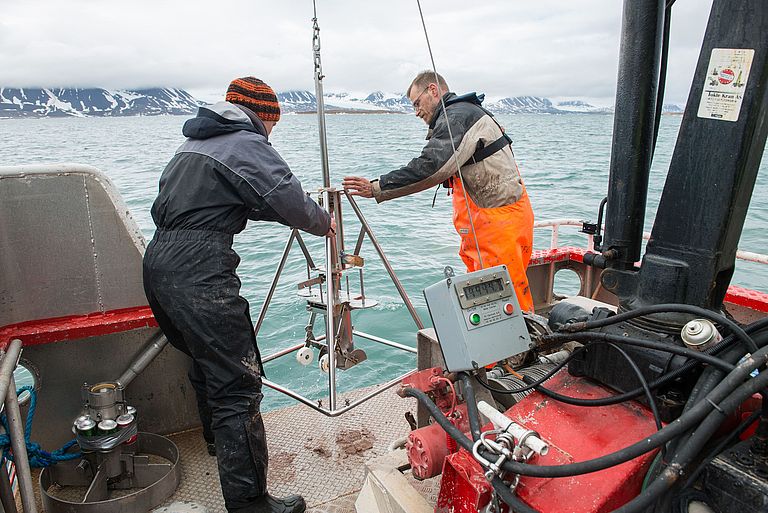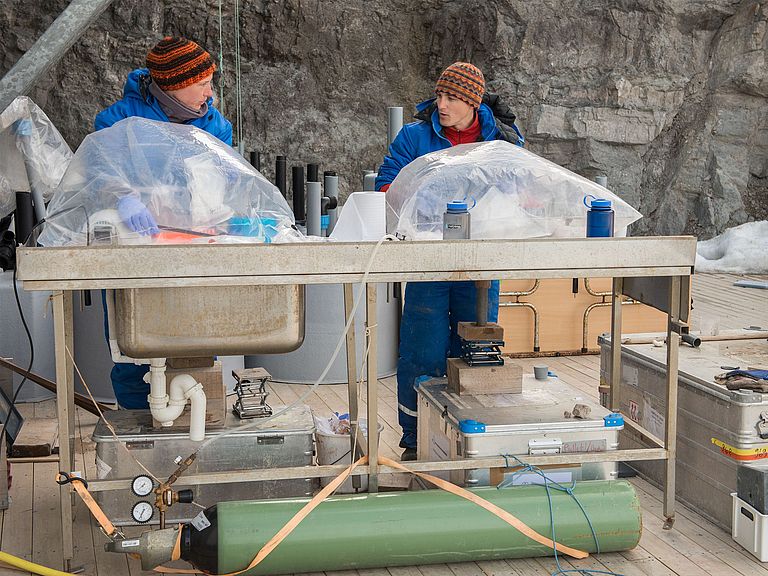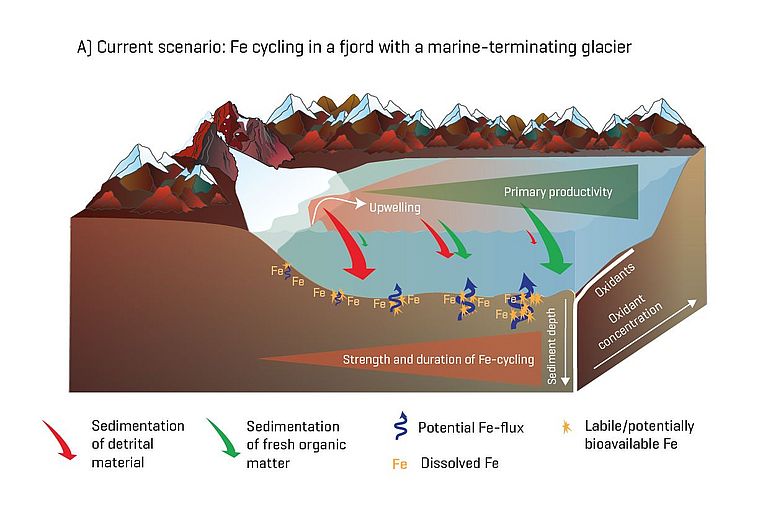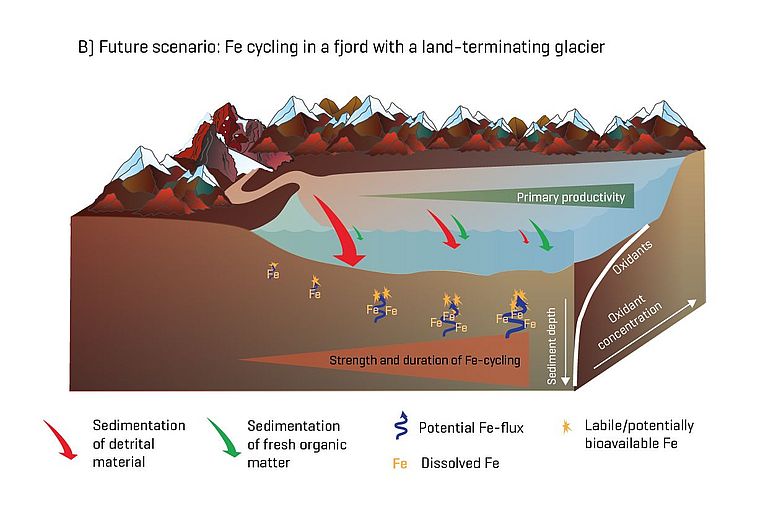Sediments are Nutrient Mediators in Arctic Fjords
Study shows complex interplay between glaciers and the seabed in Svalbard
Algae and other photosynthesising organisms in the ocean may often be tiny, but they play a major role in the Earth's climate system. They use large amounts of carbon and produce around half of the oxygen in the atmosphere. To thrive, this so-called phytoplankton needs light, carbon and nutrients. One of these is iron, which is generally rare in the ocean. That means in return: if there is a source of iron somewhere, the phytoplankton can reproduce very well.
Especially in the Arctic, glaciers that terminate in the sea are an important source of iron. But glaciers are heavily impacted by climate change and are changing very rapidly. What impact will this have on the availability of the nutrient iron in Arctic waters and thus on phytoplankton growth? An international team of scientists led by the GEOMAR Helmholtz Centre for Ocean Research Kiel investigated this question. "Using the example of several fjords on Svalbard, we were able to show that not only the glaciers themselves, but also the sediments at the bottom of the fjords play an important role in whether or not iron potentially usable by phytoplankton is present," explains Dr Katja Laufer-Meiser from GEOMAR. She is first author of the study, which has now been published in the international journal Nature Communications.
Previous studies on this topic have mainly dealt with the direct effect of the glaciers on the water of the fjords and thus the adjacent ocean. "However, our investigations show that the iron that enters the water from the glacier ice cannot be used by the phytoplankton for the most part," explains Dr Laufer-Meiser. It is initially deposited in crystalline form in the sediments at the bottom of the fjords.
In the sediments, microorganisms and chemical processes then ensure that some of the sedimented iron is converted into forms that can be used as nutrients. From the upper sediment layers, this iron gets back into the water. "Surprisingly, we found the highest concentrations of nutrient iron in the sediments not directly adjacent to the glacier tongues, but further out in the fjord," reports Dr. Laufer-Meiser, "this has not been observed before and it was the opposite of what we had expected."
The authors of the study explain this finding by lower sedimentation rates in the outer fjord areas. Since iron transformation takes place mainly in the uppermost seabed layers, there is more time before younger material covers the iron. In addition, the biological as well as abiotic transformation processes are apparently stronger in the outer fjord areas than near the glaciers.
The study thus shows that sediments are also an important source of potentially bioavailable iron. Similarly, the study found evidence that glacier retreat onto land not only alters the direct nutrient supply from the glaciers themselves, but also affects the processes in the sediments as a result. It is already known that the retreat of the glaciers causes phytoplankton to grow less, making entire fjord ecosystems less productive. In the study, it was shown that retreat also alters the chemistry and biology within the fjord sediment. "This results in less potentially bioavailable iron reaching the upper sediment layers, which is another negative feedback mechanism and can thus amplify the effects of climate change," summarises the first author.
Reference:
Laufer-Meiser, K., A. B. Michaud, M. Maisch, J. M. Byrne, A. Kappler, M. O. Patterson, H. Røy & B. B. Jørgensen (2021): Potentially bioavailable iron produced through benthic cycling in glaciated Arctic fjords of Svalbard. Nature Communications 12, 1349 (2021). https://doi.org/10.1038/s41467-021-21558-w
Images provided with this press release may be used free of charge for editorial purposes in connection with the content of this press release provided the source is acknowledged.






